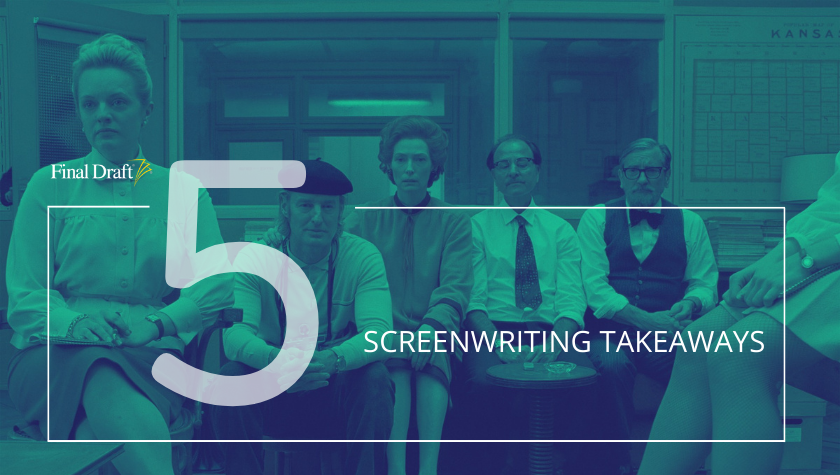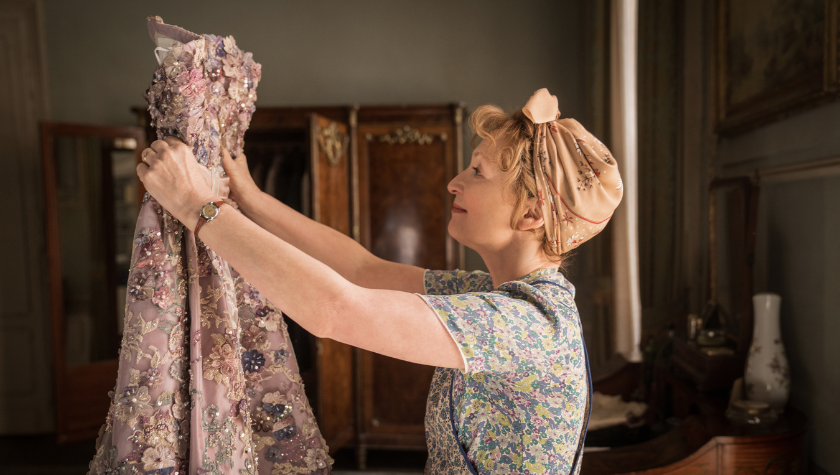5 Screenwriting Takeaways: 'Licorice Pizza' is weird, wonderful, and full of hope
December 30, 2021
Licorice Pizza is about as Paul Thomas Anderson a flick as they come.
Anderson somehow makes the sprawling San Fernando Valley feel manageable as kid actor and entrepreneur Gary Valentine (Cooper Hoffman) makes his part of town a little smaller by frequenting a restaurant where everyone knows his name and forming a crew of friends to help him with ridiculous business ideas. It is that — and falling in love with Alana Kane (Alana Haim) — that makes the danger of the Valley’s underbelly seem easier to manage.
Here are five screenwriting takeaways from PTA’s eighth film (the fifth set in the Valley), Licorice Pizza:
A genre mashup to glorious effect
Licorice is a little bit romantic comedy, a little bit coming-of-age, a little bit biopic (the movie was heavily influenced by the life and times of PTA’s childhood friend Gary Goetzman, who, as a child actor, was famously accompanied to a TV appearance by a burlesque dancer). The movie is mainly hard to categorize because it’s simply distinctly Paul Thomas Anderson. Is an extra-long sequence of Alana driving a cube truck through the hills of Tarzana a trope of any genre? Not really, but it’s a fascinating character study (especially because PTA had Haim do this the first few days of shooting). She was so in the moment of trying to be safe with the truck she flubbed some lines that Anderson then kept in (including her stating her real age instead of her character’s age, which has led some to speculate if her character was lying about her age all along).
A powerful heroine
Paul Thomas Anderson has written powerful women before: there’s Rollergirl in Boogie Nights, who will insist on rolling her way through pain. There’s Claudia Wilson Gator in Magnolia, ready to feel her pain acutely to overcome it. And there’s Lena Leonard in Punch-Drunk Love, who is unwavering in what she wants in strange love. Anderson’s women are complicated and interesting, but he’s never put one all the way in the driver’s seat. Amazingly, Alana Kane is his first female protagonist, and she’s a total joy to watch as she struggles with Hollywood power dynamics, finds herself in a changing political landscape, or when she's just musing philosophically with her sisters, who are played in the film by Haim's real-life sisters. Audiences don’t always get powerful women from this era; a time when women still needed husbands to get credit cards and the sexual revolution was just beginning. But Alana is a modern-day woman to her core. Her energy bounces off the screen. Her anguish in discovering a strange love is acute. Her hopes and dreams feel too big to be contained, and if Haim scores an Oscar® nomination, no one who falls in love with her in this film will be surprised.
Valley love
There is no doubt that the film is just as much a love letter to the Valley as it is to experiencing love for the first time. The title stems from the name of a record store that was prevalent in the Valley at the time, before it was acquired by Sam Goody. Tail o’ the Cock is Gary’s second home. It is also the name of a local L.A. spot that at one point in time had two locations, including one in Studio City that was frequented by the who's who of the moment. For an excellent breakdown on PTA’s superb sense of the weird and wonderful 1970s Valley of his youth, check out this article in GQ.
An unconventional love story
There is no denying that for better or for worse, Gary and Alana fall hard for each other. But much of their relationship is found in the pining (as tends to happen with young love). Together they live in a glorious space between space — that space between hope and dreams, between deep failure and endless potential, that precious and short-lived space between youth and adulthood. And it is a relationship of undefined in-betweens. At times Alana is Gary’s guardian, his business partner, and his best friend. But the young man ultimately proves so much more because he almost always treats Alana as an equal (something older men often fail to do).
The youthful entrepreneur
Gary is also a go-getter entrepreneur. He seems to dream and scheme as second nature — likely because he starts his young life as an actor, or maybe simply because he is such a native L.A. creature. L.A. so greatly embodies the American dream. If you can make something seem cool in L.A. you can make it seem cool anywhere, and Gary seems to have an incredible knack for finding the next cool thing, whether it be water beds or pinball machines. It is so much softer to watch the volatility of the 1970s through the soul of a young man who seems determined to make a go of whatever he damn pleases, convinced it will still all just work out for him, and the extra beauty is that it probably will.
Final takeaway: Ultimately, the pervasive tone of Licorice is perhaps most reminiscent of Punch-Drunk. While there are often undertones of melancholy (and the constant obstacles Alana will most likely have to face) the ultimate feeling is so romantically hopeful one can’t help but leave the movie theater smiling. It’s a masterful movie by a filmmaker in his prime seemingly having the time of his life, and it’s a much-needed escape as the current world seems to spin annoyingly off-kilter.
Written by: Lindsay Stidham
Lindsay holds an MFA in screenwriting from the American Film Institute. She has overseen two scripts from script to screen as a writer/ producer. SPOONER, starring Matthew Lillard (SLAMDANCE), and DOUCHEBAG (SUNDANCE) both released theatrically. Most recently Lindsay sold PLAY NICE starring Mary Lynn Rajskub. The series was distributed on Hulu. Recent directing endeavors include the Walla Walla premiering (and best screenplay nominated) TIL DEATH DO US PART, and the music video for Bible Belt’s Tomorrow All Today. Lindsay is currently working on an interactive romcom for the production company Effin' Funny, and a feature film script for Smarty Pants Pictures. Lindsay also currently works as an Adjunct Screenwriting Faculty member at USC’s School of Cinematic Arts. You can follow her work here: https://lindsaystidham.onfabrik.com/



